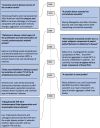A review of proposed mechanisms for neurodegenerative disease
- PMID: 39439710
- PMCID: PMC11493710
- DOI: 10.3389/fnagi.2024.1370580
A review of proposed mechanisms for neurodegenerative disease
Abstract
Neurodegenerative diseases, such as Alzheimer's, Parkinson's, and amyotrophic lateral sclerosis (ALS) affect millions and present significant challenges in healthcare and treatment costs. The debate in the field pivots around two hypotheses: synaptic spread and selective vulnerability. Pioneers like Virginia Lee and John Trojanowski have been instrumental in identifying key proteins (tau, alpha-synuclein, TDP-43) central to these diseases. The synaptic spread hypothesis suggests a cell-to-cell propagation of pathogenic proteins across neuronal synapses, influencing disease progression, with studies highlighting the role of proteins like alpha-synuclein and amyloid-beta in this process. In contrast, the selective vulnerability hypothesis proposes inherent susceptibility of certain neurons to degeneration due to factors like metabolic stress, leading to protein aggregation. Recent advancements in neuroimaging, especially PET/MRI hybrid imaging, offer new insights into these mechanisms. While both hypotheses offer substantial evidence, their relative contributions to neurodegenerative processes remain to be fully elucidated. This uncertainty underscores the necessity for continued research, with a focus on these hypotheses, to develop effective treatments for these devastating diseases.
Keywords: TDP-43; alpha-synuclein; neurodegenerative disease; neuroimaging advances; protein aggregation; selective vulnerability hypothesis; synaptic spread hypothesis; tau.
Copyright © 2024 Kelser, Teichner, Subtirelu and Hoss.
Conflict of interest statement
The authors declare that the research was conducted in the absence of any commercial or financial relationships that could be construed as a potential conflict of interest.
Figures



References
-
- Anazodo U. C., Finger E., Kwan B. Y., Pavlosky W., Warrington J. C., Günther M., et al. (2018). Using simultaneous PET/MRI to compare the accuracy of diagnosing frontotemporal dementia by arterial spin labelling MRI and FDG-PET. Neuroimage Clin. 17 405–414. 10.1016/j.nicl.2017.10.03 - DOI - PMC - PubMed
Publication types
LinkOut - more resources
Full Text Sources
Miscellaneous

